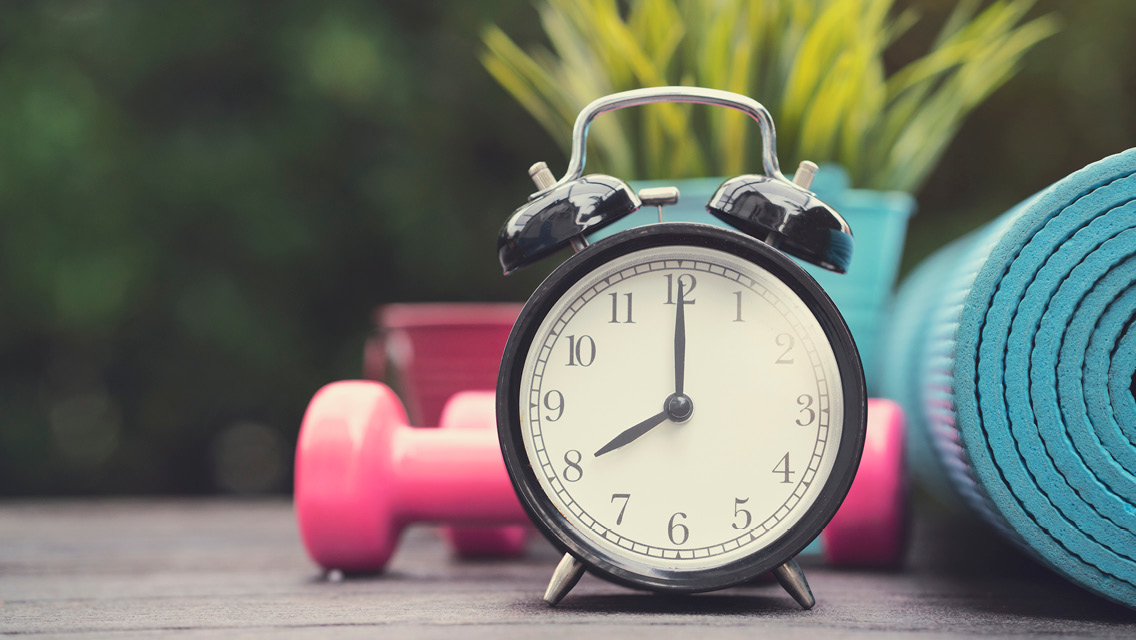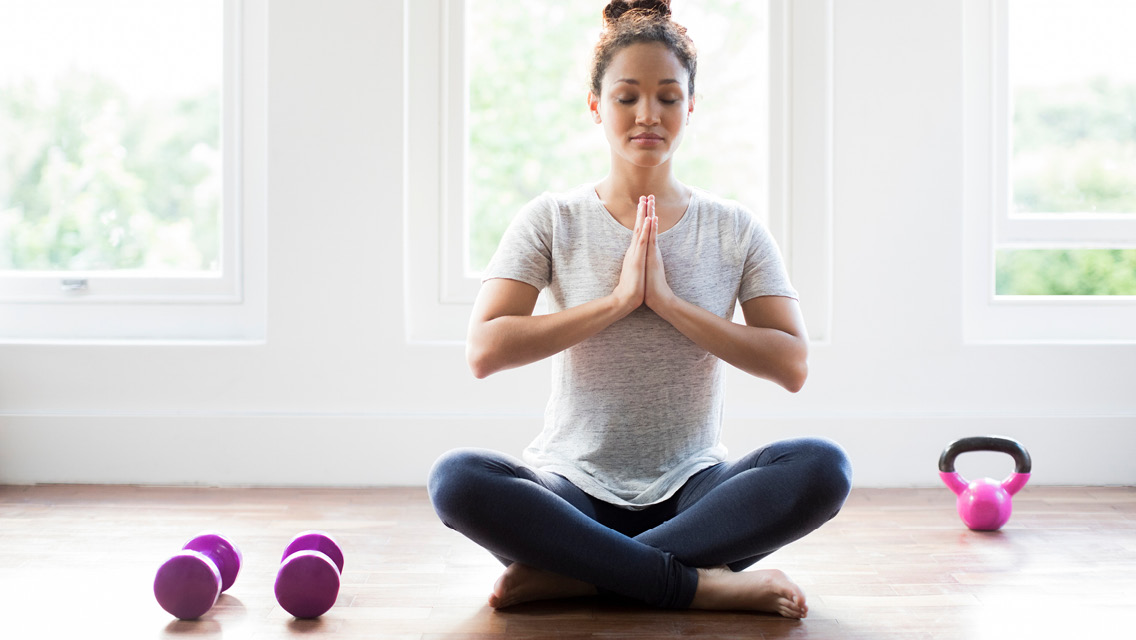We all know that repeating the same exercises day after day is counterproductive. Not only will you go batty from boredom, but your results will also suffer. You might think that the solution to this dilemma is to slide a few more pounds on the barbell and change the order of your routine. Or you might test yourself with Pilates, rock climbing or even a team sport you’ve never tried before. Unfortunately, most attempts at variation, however well intentioned, devolve into muddled disorder.
In order to achieve meaningful results, the path of physiological progress has to have a logical course and a clear destination. That’s why coaches and conditioning experts structure their clients’ routines around a clever workout cycle known as periodization.
Periodization is an amalgam of two important concepts: The progressive-overload principle and the general-adaptation syndrome. The progressive-overload principal recognizes that physical improvement occurs when the body is forced to adapt to increased stress. When you ratchet up the load on your barbell or the speed on the treadmill, you pump up the intensity of your exercise routine and thereby also improve your strength, power and endurance (and your good looks).
But that doesn’t mean that every workout you do needs to be more intense than the last. On the contrary, human progress is never linear. This is where the general-adaptation syndrome comes into play. The rule of general adaptation recognizes that after an initial growth phase, the body tends to become somewhat stale and inured to improvement. It also becomes more susceptible to injury.
Periodization accommodates these down cycles by bringing an element of science and planning into exercise variation. It’s not just a matter of taking a break now and then. Rather, it’s a progressive regime that cycles through the various facets of conditioning in a deliberate sequence – one that’s calculated to maximize yearly gains and achieve peak performance at a predetermined time.
Seasonal Cycles
Periodization parcels training into several cycles, from pre-season practice to post-season recovery. The phases of training take place within a yearlong macrocycle (long-length cycle) that’s divided into two or more mesocycles (medium-length cycles), each of which last a few moanths. These mesocycles are then further broken down into multiple one-week microcycles (short-length cycles).
Those of us who divide our exercise week to focus on specific parts of the body already understand the concept of microcycles. It’s the bigger picture – the meso- and macrocycles – that most of us are missing.
For an athlete, the macrocycle is the overarching goal of his or her training. Its aim is to attain peak performance during the competition season. Putting meso- and microcycles into the training year provides the basis for changing the athlete’s routine.
For a noncompetitive athlete who doesn’t think of exercise in terms of yearly goals, the notion of an annual training cycle can seem bewildering. If that’s you, signing up for a 10K race or a volleyball league can provide you with a goal to plan your year around. Or you can think like a bodybuilder who trains to be at his or her peak for a specific competition; your big event can be that first June strut around the pool deck.
Regardless of your goal, you’ll divide the stages of any macrocycle into three or more mesocycles. The mesocycles start with a high-volume, low-intensity phase and progress gradually to lower-volume, higher-intensity training. Take weight training for example. During your first mesocycle (known as the preparatory phase) you begin with a high-volume, low-intensity workout such as five or six sets of eight to 12 repetitions using light to moderate weight (about 50 percent of your single repetition maximum). This is the hypertrophy phase because it follows the protocol for developing muscle mass.
The second mesocycle involves lower-volume, higher-intensity exercises that develop strength. This phase usually comes right before the competition season and involves fewer sets, heavier loads and three to six repetitions.
The next mesocycle represents the power phase, which characteristically involves very intense, low volume, skill-oriented workouts. This is the phase at which you might incorporate plyometric training, speed work and heavy, multi-joint, low repetition lifts such as power squats and heavy bench presses. Last of all is the recovery phase – also known as active rest. This is when you get to try out different forms of recreational exercise, such as racquetball or bicycle riding – that is unless you’re a racquetball player or a cyclist.
Plan Your Year
The possibilities for training cycles are by no means limited to the examples I’ve listed. The basic idea is to create an exercise calendar that plots out the entire year and divides it into logical phases. If you train for a sport, the goals and the seasons are predetermined. If you exercise for the love of it, then you might follow the calendar year.
I, like most people, prefer to start my training in January. From the first of the year until early March, I concentrate on hypertrophy and use a high-volume, low intensity routine. This includes multiple weight sets and long, slow runs. In March, I crank up the focus. I begin working with heavier weights and make my runs shorter and faster. In May I concentrate on interval training and skill-oriented workouts. I alternate plyometrics with multi-joint lifts. In July, I taper off and enjoy the great weather. I camp, swim and take long evening walks. In fall, it’s back to long runs and endurance work. When the winter holidays approach, I’m ready to take advantage of the good food with workouts geared toward building muscles. At this time of year I’m less concerned about my waistline. Why swim upstream?
I call this macrocycle the “family man plan.” It helps me make sense of my 12-month training routine and keeps the pounds off from year to year. With a little ingenuity (and some advice from a certified trainer), you can devise your own macro-, meso- and microcycles to keep your training fresh for a lifetime of fitness.
The 3 Phases of Periodization
- MACROCYCLE: Corresponds to the entire athletic cycle and usually lasts one year, although for Olympic athletes it goes on for four.
- MESOCYCLE: This phase lasts one to three months and corresponds to the objectives of training – from low-intensity, high-volume exercise geared toward hypertrophy to high-intensity, low-volume, sport-specific drills like plyometrics.
- MICROCYCLE: The most familiar to recreational athletes, this phase corresponds to the weekly training routine that cycles through various types of training, from low-intensity aerobics to heavy-duty resistance training.
The 3 Stages of the General Adaptation Syndrome
- THE FIRST STAGE is the “shock and alarm” phase. It’s the period when your muscles sting and stiffen after your workout. If you believe in the “no pain, no gain” principle, this stage feels like you’re making real progress, although in reality you may actually be taking a dip in performance.
- CONTINUE WORKING OUT and your body transitions into the second stage of adaptation, also known as the “super-compensation phase.” Your body adjusts to the training routine, your workouts become pleasurable, and you don’t need Advil the morning after.
- IF YOU CONTINUE TOO LONG with the same old routine, you advance to stage three: stagnation and exhaustion. You will plateau and may actually lose performance at this final stage. The way to prevent this is to organize your program into successive training cycles that focus on different, although related, physiological adaptations.
Planning Your Own Periodization Program
Virtually everyone striving to get into better shape stands to benefit from breaking down their long-term fitness goals into smaller, progressive training segments. Why not launch your periodization plan now? Summer is an excellent time to start a program that peaks in late fall, just in time for the important road races (and for warding off the autumnal weight gain often ushered in by Thanksgiving dinner).
Phase 1: High Volume, Low Intensity
Regardless of the events you’re training for (or whether you’re training for an event at all), start with a four-to-six week mesocycle (medium-length cycle) of high-volume, low-intensity workouts. This is the time to establish a base level of conditioning to increase your tolerance for more intense training later. But this doesn’t mean you’ll be doing easy, kickback workouts during this phase. On the contrary, this is the time for circuit training, body toning, step aerobics and other high-volume, calorie-consuming training sessions that keep your heart rate at 60 to 80 percent of your maximum for 60 minutes or longer.
Although you’re not training with heavy weights or racing at top speed, this type of extended workout can exhaust you. That’s why you would never want to do such high-volume training in the middle of your sports season (when you’re focused on performance and need your energy for competition).
For aerobic athletes, a high-volume workout involves longer distances at a slower pace. For lifters, it means 12 to 15 repetitions at about 50 percent of your one-repetition maximum. Focus on endurance exercises such as pull-ups, pushups, sit-ups and walking lunges. Then, between sets, instead of resting, run around the track to improve your stamina.
Phase 2: Moderate Volume, Moderate Intensity
After four to six weeks of high-volume endurance training you’ll be ready to ratchet down the volume of work and pick up the intensity. During this second mesocycle you’ll turn your attention toward building absolute strength. This is a good time for runners to add tempo runs and interval training to their weekly routine. Lifters can drop their reps to eight to 10 and increase their weight proportionally. Add a two minute rest period between sets and concentrate on structural exercises such as squats, dead-lifts and the bench press.
Phase 3: High Intensity, Low Volume
As your sports season approaches, you will start shifting your emphasis away from workout magnitude and more toward skill-specific, power-related exercises. This is the time to head for the track to work on your speed and stride. You might include plyometric drills and anaerobic sprints. Workout sessions become short, very intense and geared toward developing speed, balance and agility. You’ll be working at or near race-pace.
Lifters should concentrate on explosive lifts such as the push jerk, snatch and power clean. Your reps should drop to about three to five and your weight should increase to 80-to-90-percent of your one-repetition maximum. Rest periods can extend two to five minutes. Concentrate on the core lifts and focus on form and explosive power rather than absolute strength or endurance.
Phase 4: Active Rest
After the sport season, or perhaps your last fat and fitness assessment for the year, take time to rest by engaging in fun sports and a new emphasis in exercise activities. If you’re a runner, try cycling for the next few weeks. If you’re a lifter, go take a yoga class. The change allows your body time to recover and get ready for the next macrocycle, when the training year begins all over again, but this time, at a higher level.




This Post Has 0 Comments